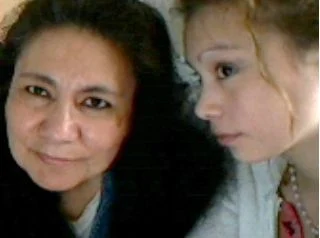Housing inspection services delivered by FNNBOA to First Nations communities
A national non-profit organization is fighting in the trenches of First Nation housing. First Nations National Building Officers Association (FNNBOA) is a volunteer organization that represents a profession offering technical services in residential construction and renovation on-reserve.
FNNBOA members are qualified to deal with house plan reviews, inspections, recommendation of repairs, and they provide technical advocacy and advisory services for on-reserve housing.
A national non-profit organization is fighting in the trenches of First Nation housing. First Nations National Building Officers Association (FNNBOA) is a volunteer organization that represents a profession offering technical services in residential construction and renovation on-reserve.
FNNBOA members are qualified to deal with house plan reviews, inspections, recommendation of repairs, and they provide technical advocacy and advisory services for on-reserve housing.
Chief Keith Maracle, Tyendinaga, Ontario, is secretary of the volunteer board, “There are approximately 250 to 300 employed in this sector,” a small number in relation to the number of First Nation Indian Act-governed communities in Canada, no less than 700 inhabited Indian Reservations.
FNNBOA faces a peculiar challenge to expand the role of its officers in First Nation housing, “We are seen as regulatory,” said Chief Maracle, and regulations are apparently not something to be desired in the fractious world of First Nation housing.
FNNBOA members are qualified to inspect housing construction, “We have occupational standards, a code of ethics, and certification procedures to inspect houses on reserve.” Chief Maracle says FNNBOA members are qualified to support CMHC and mortgage approvals, INAC leasehold guarantee programs, and reports to Environment Canada.
Richard ‘Bud’ Jobin is co-President of FNNBOA who hails from central Alberta. Since 2002 when they laid the organizational groundwork, these two men have been advocates of professional First Nation housing services, “Certified inspection of First Nation housing is becoming a compliance issue,” says Bud, “which impacts on mortgage and insurance.”
It may not be here but the age of reason is coming over First Nation housing policy and FNNBOA intends to have First Nation housing inspection services in the ready. They have training affiliations with George Brown University, Humber College, NAIT, and Vancouver Island University to produce qualified First Nation Housing inspectors.
Bank creating viable housing market
Royal Bank of Canada illustrates the growing importance of certified inspection services in First Nation housing. RBC introduced a program this spring to help First Nations capitalize on economic growth opportunities.
RBC announced a new mortgage program called the Leasehold Mortgage Program to, “provide First Nations members with greater flexibility and choice when it comes to financing the purchase or construction of a home.” It also helps create marketable housing in reserve communities.
“RBC has worked with First Nations leaders/governments for many years to find and provide options for financing a home in the same manner that is offered off a reserve,” said David Cutway, manager, Residential Mortgages Policy, RBC.
“This new CMHC default-insured program . . . allows qualified borrowers on qualified reserve lands to obtain a home mortgage, benefitting both the purchaser and the First Nation community.”
Financing of on-reserve housing has been limited in the past, said Mr. Cutway. “For example, First Nations members had to obtain a band or Ministerial Loan Guarantee (MLG) to secure a loan to purchase a home on reserve land. In addition, the First Nation government was responsible for the construction, maintenance and repair of these homes.”
The Leasehold Mortgage Program can help First Nations improve economic development through the construction of new homes, renovations to existing homes, purchases of new or existing homes, and construction of duplexes to four-plexes.
First Nations communities may also use the program to attract non-Aboriginal homebuyers to properties developed on leasehold land, such as the housing development projects undertaken by the Westbank and Tzeachten First Nations, both of which are located in British Columbia. Ed note There is no advertising sold in support of all the research and writing, so feel free to donate in aid of the important message delivered:









